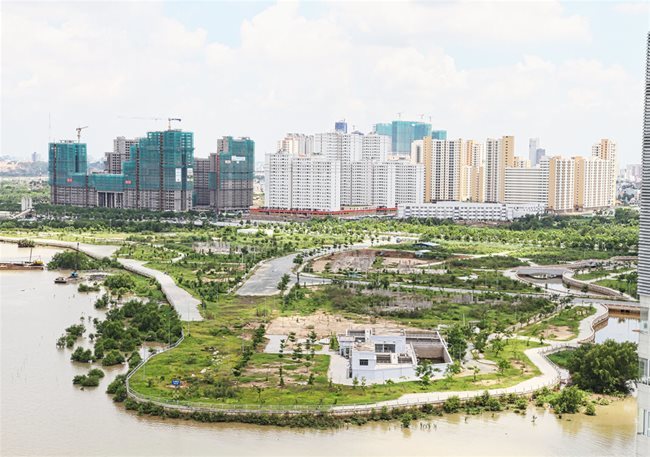 |
| Ho Chi Minh City's Grade A & B market starts to feel the heat from the COVID-19 with net absorption falling into negative territory for the first time in a decade. |
Regional investment volumes in the first six months of this year have fallen 32 percent from a year earlier, JLL says. The preliminary data showed second quarter investment activity 39 percent lower year-on-year, following a 26 percent drop in the first quarter.
The slowdown came amid lockdowns and travel restrictions that inhibited investors’ short-term capital deployment plans.
“The sharp decline in deal activity reflects the lack of willing sellers and the general uncertainty that exists around market recovery,” says Stuart Crow, CEO of JLL’s Capital Markets Asia Pacific. “Liquidity remains very high, and we expect transaction activity is poised to rebound in the second half as economies further reopen and pricing expectations are adjusted in certain markets.”
The pandemic was keeping investors on the side lines as to whether to invest or expand businesses in Vietnam. Total foreign investment amounted nearly 15.7 billion USD in the first half of the year, down 15.1 percent year-on-year.
In Ho Chi Minh City, Grade A & B market started to feel the heat with net absorption falling into negative territory for the first time in a decade, registering minus 3,619 sqm in 2020. This was mainly due to small and medium enterprises, who were major sources of tenants in Grade B market, scaling down and early terminating the contracts as a result of the COVID-19 impacts. Grade A sector, backed up by deep-pocketed companies, was also under pressure. This was proven by the halting demand from expansion and new set-up during the outbreak.
However, the market has not recorded much rent adjustment last quarter as landlords seemed to stay confident with the current tight market and limited future supply.
Retail rents were the most severely impacted by lockdowns, mobility restrictions, and strict social distancing. Vacancy rate in HCM City’s shopping malls increased to 30 percent in the second quarter of 2020. The “social distancing” measures during the first three weeks of April led to the temporary close down of all the malls in the southern city. After the measures were lifted, most of the malls started to re-operate, but with more vacant space, as weak leasing demand continued.
The rental remained unchanged quarter-on-quarter during the period, staying at 79.4 USD per sqm per month in the central business district (CBD) and 38.5 USD per sqm per month in the non-CBD area. Some landlords maintained their rental concessions such as rent discount or rent deferment till end-May. Rental policies in almost malls were getting back to normal in June.
There is still significant uncertainty about growth and the shape of recovery amid the COVID-19, says Roddy Allan, JLL’s Chief Research Officer Asia Pacific, indicating that investors will approach the market in the second half with measured optimism, which will accelerate further in early 2021./. VNA

Southern Vietnamese real estate market: emergence of large M&A deals
The southern real estate market has witnessed a series of impressive mergers and acquisitions (M&A) deals. This trend is expected to be more vibrant in the near future.

Share of real estate in the economy
The added value share of the real estate sector in gross domestic product (GDP) has gradually declined due to its lower growth versus the overall growth of the economy